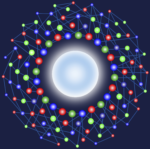Information regarding the preparation of your poster can be found here.
Information regarding the recording and upload of your presentation can be found here.
Information regarding the preparation of the final manuscript can be found here.
Information regarding attending the poster session can be found here.
Call for Papers
You can download a PDF version of this Call for Papers.
Following the tradition of previous editions, ONDM 2021 addresses cutting-edge research in established areas of optical networking and their adoption in support of a wide variety of new services and applications. This includes the most recent trends such as 5G and beyond; data-centre networking; Internet of Things; cloud/edge computing; content delivery; big data, data analytics, network telemetry and real-time monitoring; autonomic networking; artificial intelligence / machine learning assisted networks; visible light communications; and quantum secured networks.
Such trends drive the need for increased capacity, efficiency, flexibility, and adaptability in the functions that the network can perform. In turn, these needs can be achieved by developing new optical network architectures, based on different optical network disaggregation models, exploiting and integrating novel multidimensional photonic technology solutions as well as by adopting open and highly programmable hardware and software platforms such as software-defined networking (SDN), and network function virtualization (NFV), to allow supporting new business models and opportunities. The scope of the conference includes but is not limited to the following topics:
- Advances in optical network modelling and optimization
- Routing and spectrum assignment in fixed and flex-grid optical networks
- Optical network availability, resilience, survivability, security and privacy
- Multi-layer (e.g. IP over optical) networking
- Optical networks exploiting photonic integrated circuits
- Visible light communications and networks
- Optical and wireless network convergence, including radio-over-fibre access networks
- Optical networks in 5G and beyond: backhaul, midhaul and fronthaul networking
- Novel and multidimensional optical network architectures; multi-mode/few-modes optical networks
- Novel optical node designs including disaggregation and open optical line systems
- Optical networks in support of intra-/inter-data centre connectivity and cloud/edge computing
- Optical network control, management and orchestration including SDN and NFV solutions
- Slicing, service chaining, virtualization and multi-tenancy techniques for optical networks
- Optical networking supporting low latency and high bandwidth network function virtualization
- Orchestration and control of IT and network resources in optical data-centre networks
- Artificial Intelligence and data analytics techniques for optical networks
- Novel network telemetry and real-time monitoring technologies for optical networks
- Energy efficiency in optical networks
- Transporting Power over Fibre
- The hollow fibre revolution in network design
- Optical networking in support of vertical industries
- Field trials and interoperability demonstrations of optical networks
- Techno-economic studies of optical networks
IEEE/OSA JOCN Special Issue
Selected ONDM2021 papers will be considered for publication in the IEEE/OSA Journal of Optical Communications and Networking (JOCN) ONDM2021 Special Issue, to be published in Spring 2022. The selection criteria include the conference paper’s score, novelty, and impact. The extensibility of the paper with significant new material is also a key requirement for inclusion in this Special Issue. While it is expected that invitations to the Special Issue will mainly be extended to authors of Short papers (3 pages), extensions of Full papers (up to 6 pages) may be considered as well if they meet such requirements.
Best paper award
The best paper will be awarded a monetary prize sponsored by ADVA Optical Networking SE.
Best student paper award
The best student paper will be awarded a monetary prize of 5000 SEK. The prize is sponsored by the IEEE Photonics Society – Sweden Chapter. Only papers with a student as the first author will be eligible for the competition.
Submission instructions
Authors are encouraged to submit either abstract / short papers (3 pages) or full papers (up to 6 pages) in standard IEEE conference style (https://www.ieee.org/conferences/publishing/templates.html), describing original, unpublished research results, not currently under review by another conference or journal, addressing forefront research and development in the area of optical network design and modelling.
Only PDF files with all fonts embedded are accepted. Your submitted PDF file and registered EDAS account of a paper must list the same author(s), title and abstract. Papers where the PDF and EDAS account do not match the author(s), title, and/or abstract will be withdrawn by the Technical Program Co-Chairs.
Authors must submit their papers electronically through EDAS using the following link: https://edas.info/N27842.
